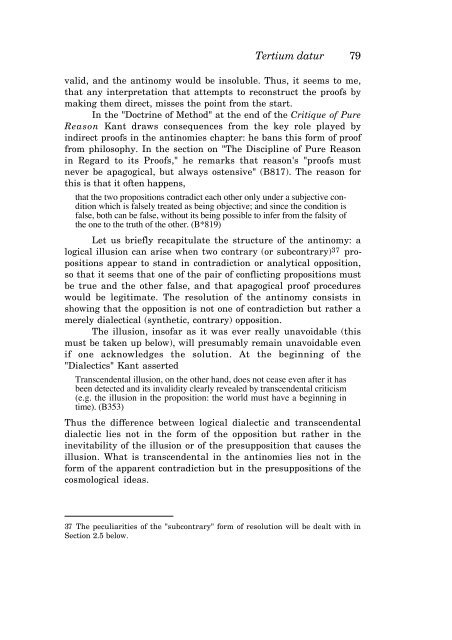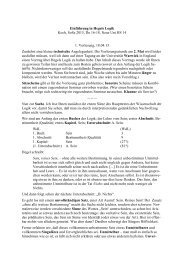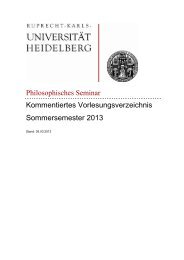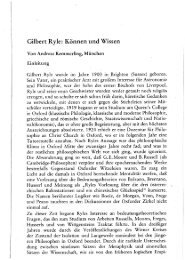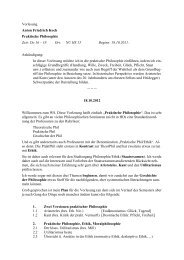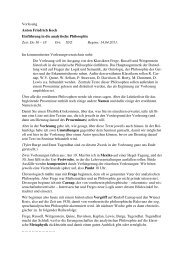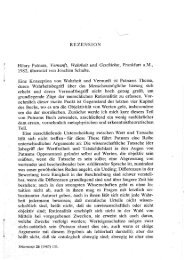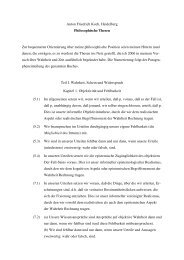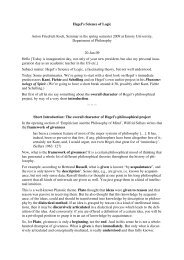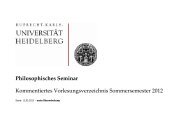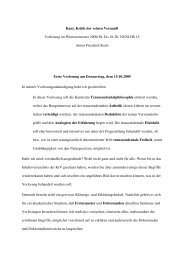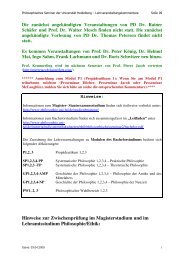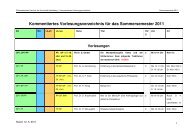KANT'S CRITIQUE OF TELEOLOGY IN BIOLOGICAL EXPLANATION
KANT'S CRITIQUE OF TELEOLOGY IN BIOLOGICAL EXPLANATION
KANT'S CRITIQUE OF TELEOLOGY IN BIOLOGICAL EXPLANATION
You also want an ePaper? Increase the reach of your titles
YUMPU automatically turns print PDFs into web optimized ePapers that Google loves.
Tertium datur 79<br />
valid, and the antinomy would be insoluble. Thus, it seems to me,<br />
that any interpretation that attempts to reconstruct the proofs by<br />
making them direct, misses the point from the start.<br />
In the "Doctrine of Method" at the end of the Critique of Pure<br />
Reason Kant draws consequences from the key role played by<br />
indirect proofs in the antinomies chapter: he bans this form of proof<br />
from philosophy. In the section on "The Discipline of Pure Reason<br />
in Regard to its Proofs," he remarks that reason's "proofs must<br />
never be apagogical, but always ostensive" (B817). The reason for<br />
this is that it often happens,<br />
that the two propositions contradict each other only under a subjective condition<br />
which is falsely treated as being objective; and since the condition is<br />
false, both can be false, without its being possible to infer from the falsity of<br />
the one to the truth of the other. (B*819)<br />
Let us briefly recapitulate the structure of the antinomy: a<br />
logical illusion can arise when two contrary (or subcontrary) 37 propositions<br />
appear to stand in contradiction or analytical opposition,<br />
so that it seems that one of the pair of conflicting propositions must<br />
be true and the other false, and that apagogical proof procedures<br />
would be legitimate. The resolution of the antinomy consists in<br />
showing that the opposition is not one of contradiction but rather a<br />
merely dialectical (synthetic, contrary) opposition.<br />
The illusion, insofar as it was ever really unavoidable (this<br />
must be taken up below), will presumably remain unavoidable even<br />
if one acknowledges the solution. At the beginning of the<br />
"Dialectics" Kant asserted<br />
Transcendental illusion, on the other hand, does not cease even after it has<br />
been detected and its invalidity clearly revealed by transcendental criticism<br />
(e.g. the illusion in the proposition: the world must have a beginning in<br />
time). (B353)<br />
Thus the difference between logical dialectic and transcendental<br />
dialectic lies not in the form of the opposition but rather in the<br />
inevitability of the illusion or of the presupposition that causes the<br />
illusion. What is transcendental in the antinomies lies not in the<br />
form of the apparent contradiction but in the presuppositions of the<br />
cosmological ideas.<br />
37 The peculiarities of the "subcontrary" form of resolution will be dealt with in<br />
Section 2.5 below.


